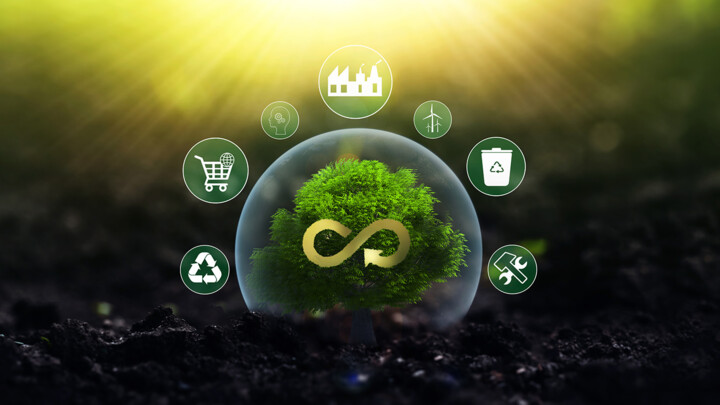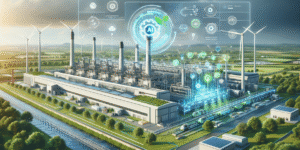Circular economy is a paradigm shift away from the traditional “take, manufacture, and dispose” model. It aims to keep resources as useful as possible. This approach focuses on repairing, refurbishing, and recycling products instead of throwing them away after a single use. The concept of a circular economy is not new. However, the technology that has been developed makes it possible to implement the practices in a way that is profitable and scalable.
AI and Machine Learning
Artificial intelligence and machine learning are revolutionizing waste and resource management. Smart algorithms are now able to predict equipment failures in advance, which can extend product lifespans by a significant amount. Companies such as Siemens utilize AI to monitor industrial machinery. Instead of replacing entire systems, they precisely schedule maintenance when necessary. Machine learning is also used to power sophisticated sorting systems at recycling facilities. These systems identify materials with an accuracy rate of over 95%. These systems are able to distinguish between different types of plastics, metals, and paper products quicker than a human operator. This process improves recycling efficiency and reduces contamination rates.
Blockchain Technology
Blockchain records are transparent and tamper-proof, which allows products to be tracked throughout their lifecycle. Consumers and companies can verify product origins, journeys, and environmental impacts with this technology. Fashion brands such as Stella McCartney track sustainable materials all the way from their source to their store. Electronics manufacturers also document component origins to ensure responsible sourcing. Blockchain platforms enable smart contracts to automatically initiate specific actions upon meeting certain conditions. For example, they can initiate product returns when an item reaches end-of-life status or reward consumers who participate in take-back programs.
Internet of Things (IoT).
Sensors and IoT devices connected to the internet provide real-time information that optimizes resource use across supply chains. Smart bins monitor the level of filling and optimize collection routes to reduce fuel consumption and emissions. Manufacturing uses IoT sensors to monitor material flow and pinpoint potential reuse opportunities for otherwise discarded byproducts. IoT systems are used by companies like Interface, which manufactures carpets, to monitor the carbon-neutral manufacturing process and ensure materials are recycled effectively. These connected systems enable predictive analytics, which helps businesses better plan maintenance, repairs, and material requirements.
3D Printing
Additive manufacturing is changing the way we approach production and repairs. 3D printing allows for on-demand production, which reduces overproduction and waste. It’s also a way to revive the repair culture. Consumers and businesses are able to print replacement parts for damaged products instead of throwing them away. Automobile companies are now 3D printing spare parts for older models of vehicles, which extends their operational life. Local production is also possible, which reduces transportation emissions. This technology also supports distributed manufacturing models that are inherently circular.
Today’s Sustainable Solutions
The technology is not only supporting the circular economic system, but it also makes it inevitable. Businesses across all industries are finding that, as digital tools improve and become more accessible, circular practices can often provide better financial returns. Companies that treat technology as a core part of their sustainability strategies are the ones who will succeed in this transition. The digital age is driving the circular economy revolution.
FAQs
1. What is a circular economy?
Circular economy is an economic system that reduces waste through reuse, sharing, repairing, and refurbishing products and materials for as long as they can be used.
2. How can AI help improve recycling?
AI-powered sorting can separate and identify different materials with greater than 95% accuracy. This improves recycling efficiency and reduces contamination when compared to manual methods.
3. Does blockchain track products through their entire lifecycle?
Blockchain creates unalterable records that follow products from their raw materials until the end of life, providing complete transparency regarding origin, manufacturing processes, and environmental impact.
4. What is the role of IoT in waste reduction?
IoT sensors can monitor resource use in real time, optimize collection routes, track material flow, and even enable predictive maintenance. All of these reduce waste and increase efficiency.
5. Does 3D printing have an environmental impact?
3D printing eliminates overstock and waste, reduces transportation emissions by enabling local manufacturing, and improves product repair through printing replacement parts.




